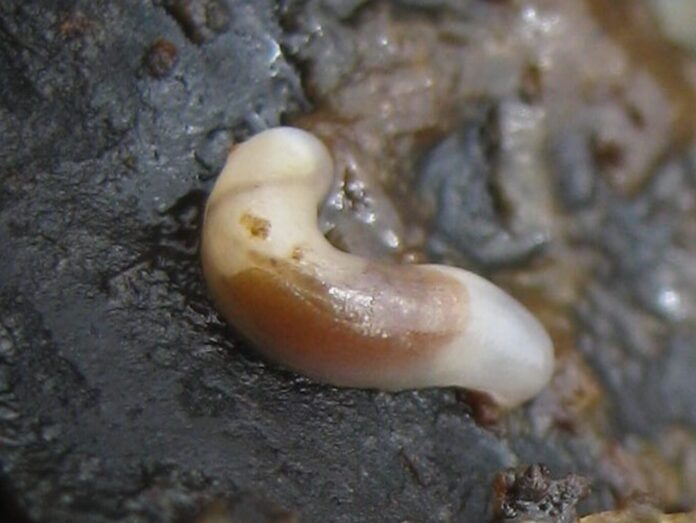Otago can now lay claim to its own population of the rare and nationally threatened Smeagol sea slug following an Otago Regional Council discovery in the Akatore Creek estuary – 50 kilometres south of Dunedin.
It is just the fourth population found in the country of the up to 8mm-long sand-dwelling slug-like mollusc since its discovery in 1979.
Also known as a gravel maggot, gravel slug or blind slug, its scientific name Smeagol was inspired by the pallid, elusive, subterranean creature Smeagol-turned-Gollum in JRR Tolkien’s Lord of the Rings.
Council’s Freshwater Ecologist, Ciaran Campbell says it was an “exciting discovery” to find the rare Smeagol within Otago, but highlighted there’s little known about Smeagol and its ecological role in nature.
“While they’re small and unassuming creatures, Smeagol likely plays a role in recycling nutrients from beach-cast kelp back into the thriving ecosystems of the surrounding oceans,” he said.
“However, their name, ecology, and threat status all give Smeagol an iconic status.
“The gravel maggot has a similar lifestyle to the Hobbit and Lord of the Rings character Smeagol, living below light-deprived gravel beach surfaces.”
Gravel dwelling makes Smeagol very difficult to find and study as they tend to be 30cm to 1m below the surface and concentrated in relatively small areas, he says.
The Council is reaching out to Smeagol experts around the country with information on the exciting southern discovery.
The only known New Zealand Smeagol populations – hundreds of kilometres distant of one another – are at Houghton Bay near Wellington, Kaikoura peninsula, plus there was an eDNA detection in 2022 on the West Coast at Hautai Marine Reserve; 85km south of Haast.
The sampling at Akatore estuary was undertaken by Council’s Senior Environmental Technician – Biodiversity, Matt Salmon, who noted differences between the sandy silty habitat at Akatore estuary and where Smeagol have previously been found.
Wilderlab’s report noted the genetic signature of the Akatore Smeagol was also “slightly different” to that of the Wellington population, so it could potentially be a new species.
Mr Campbell says it’s not known if the Akatore population is its own species or related to the others elsewhere, noting there are no known populations within 500km of Akatore.



